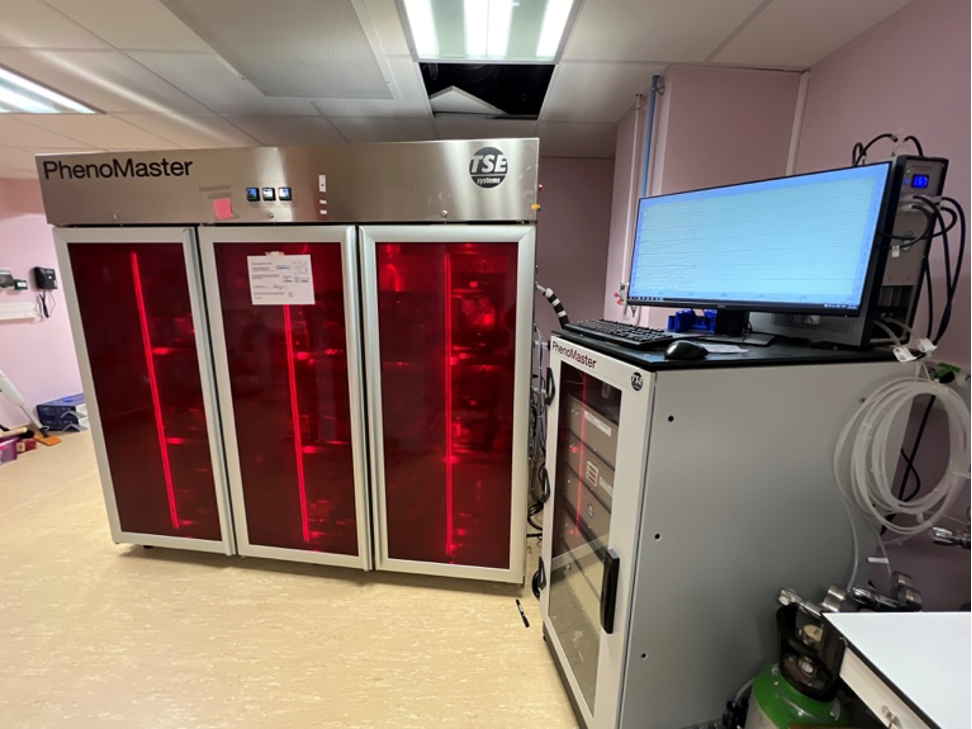Light sheet microscopy, or light sheet fluorescence microscopy (LSFM), is an advanced imaging technique that allows three-dimensional observation of biological specimens with high resolution and low phototoxicity. Unlike traditional microscopes that illuminate the entire sample, LSFM uses a thin sheet of light to illuminate only the focal plane, reducing photobleaching and damage to living cells.
Technical Expertises
Microscopy
This method offers a number of scientific advantages, including the ability to image thick samples with a high penetration depth, fast acquisition speed and better preservation of biological structures. LSFM is particularly useful for studying dynamic processes in living tissue, such as embryonic development or cellular interactions, as it provides detailed and accurate images without disturbing natural biological processes.

Dr. Cécile Allet

Dr. Gaetan Ternier

Sarah Gallet
Electrophysiology
Electrophysiology is a branch of physiology that focuses on the electrical properties of biological cells and tissues. It involves the study of how electrical signals are generated and transmitted within the body, particularly in excitable cells such as neurons. The primary goal of electrophysiology is to understand the mechanisms underlying the electrical activity of cells. This includes investigating the ion channels and pumps that regulate the flow of ions across cell membranes, as well as the electrical potentials that result from these ionic movements. By studying these processes, researchers can gain insights into how cells communicate with each other and how electrical signals are integrated to produce complex physiological functions.
Electrophysiological techniques are widely used in both basic research and clinical settings. In basic research, these techniques help scientists explore the fundamental properties of cellular excitability and synaptic transmission.
In the context of the nervous system, electrophysiology plays a crucial role in understanding how neurons process and transmit information. By recording the electrical activity of neurons, scientists can study the neural circuits underlying sensory perception, motor control, cognition, and behavior. This knowledge is essential for developing new therapies and interventions for neurological and psychiatric disorders.

Dr. Damien Lemoine
Metabolic Phenotyping
Metabolic cages are specialized enclosures used in scientific research to study the physiological and metabolic processes of mice. These cages are essential for understanding metabolic responses. These cages are used in metabolisc studies, nutritional research, toxicological evaluations, and investigations into metabolic disorders. They provide precise metabolic data, making them valuable tools for scientific research and development.

Dr. Emilie Caron

Jessica KLUCZNIK
Cytometry
Fluorescence-Activated Cell Sorting (FACS) is a powerful scientific technology used to isolate and sort individual cells from a heterogeneous mixture based on specific characteristics. This method is widely employed in biomedical research, clinical diagnostics, and therapeutic applications, enabling the precise separation of cell populations for further analysis or use.
FACS operates by suspending cells in a fluid stream, which then passes through a laser beam. As each cell traverses the beam, it scatters light and emits fluorescence, which is detected and analyzed. The system uses fluorescent markers, such as antibodies or dyes, that bind to specific cellular targets, allowing for the identification and sorting of cells based on their fluorescent properties.
The process begins with the labeling of cells with fluorescent tags that recognize particular surface markers or intracellular molecules. These labeled cells are then introduced into the FACS machine, where they are encapsulated in droplets formed by a vibrating nozzle. As the droplets pass through the laser, the emitted fluorescence is measured, and an electrical charge is applied to deflect the droplets into separate collection containers based on predefined criteria.
FACS technology offers several advantages, including high-speed sorting, the ability to handle large cell populations, and the capacity to sort cells based on multiple parameters simultaneously. This makes it an invaluable tool for applications such as stem cell research, cancer biology, immunology, and gene therapy, where the isolation of specific cell types is critical for understanding biological processes and developing targeted therapies.


